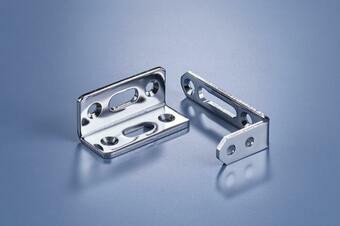Electro polishing is a process that uses electricity to dissolve the surface of a product.
Plating produces a metal film on the surface, while electro polishing melts the surface of the product, so it diminishes in size as it is processed.
It is used to make the surface glossy and remove burrs.
Corrosion resistance is improved on the electropolished surface because the chromium ratio on the surface increases after the affected layer is removed.

Basic characteristics
| Wear resistance | Heat resistance | Corrosion resistance | Chemical resistance | Decorativeness | Lubricity | Adhesion | Electrical conductivity | Dimensional accuracy |
| 〇 | ◎ | ◎ | ◎ | ◎ | 〇 | - | △ | △ |
Features
Features 1Surface unevenness is removed.
Electropolishing smoothes the unevenness of the surface by utilizing the electrical characteristics
that electricity tends to concentrate on the tip of the product and the physical characteristics of the high and low anti-layers that are formed during the dissolution reaction.
Although some surface irregularities remain, we have a proven ability to polish and etch a surface having an Ra of more than 1μm down to 0.6μm.
It is also possible to remove burrs generated by machining and smooth the edges.
Enhancing corrosion resistance.
By dissolving iron in stainless steel, the composition ratio of the surface changes and the chromium ratio rises, which can improve the corrosion resistance.
In fact, evaluation of electropolished products has shown a decrease in the rate of corrosion.
Plating equipment
| Processing type | Maximum size | Maximum weight |
|---|---|---|
| Rack | 1000 × 500 × 600H | 10kg |
Proceccable materials
Austenitic stainless steel, ferritic stainless steel (Note that for free-cutting materials, ingredients may be dissolved and cause unevenness in appearance.)
Application
Transport rolls, sanitary parts, pharmaceutical manufacturing equipment, machine parts, automobile parts, etc.